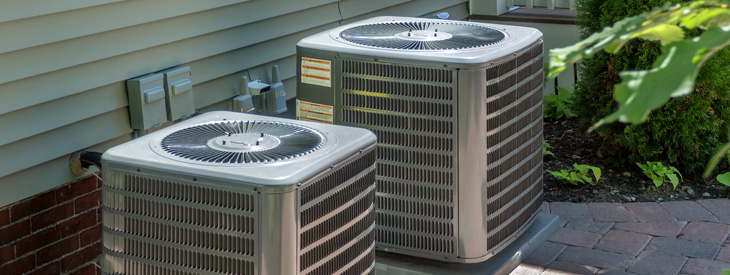
Deciding When to Replace Your R22 AC
Recently, we have received a few questions about the advantages and disadvantages of replacing an older R-22 outdoor unit (partial replacement) versus replacing the whole system (indoor and outdoor components). Since R-22 refrigerant and related equipment is being phased out over the next few years as part of the Montreal Protocol regulations to reduce the effect on atmospheric ozone, the decision about whether to stay with R-22 or jump to a new system with R410A is causing some confusion among HVAC consumers. This is becoming a very common situation and there is really no right or wrong answer as it depends on your particular needs and your personal preferences. We’ve compiled a few considerations and suggestions for reference.
Replacing an R-22 compressor or the outdoor unit (which contains the compressor) is a good, low cost way to get your A/C system running again without changing the indoor system (which contains the cooling coil, the blower and often is integrated with a gas furnace or other heating system). This approach can save some money, if the indoor components are still in good shape and you can find the R-22 outdoor replacement parts along with the R-22 refrigerant. Many people have decided to do this and many contractors support this approach. We think this repair will continue to be a viable, low cost repair option, at least through 2016 and maybe longer – as long as parts are available.
Some other low cost replacement options should be emerging even after the R-22 availability dwindles. Many R-22 indoor coils built since 2006 were designed to be compatible with R-410A, which means a homeowner can keep the indoor equipment but upgrade to a newer outdoor unit and metering device. There are some extra parts and steps involved but it should still be lower cost than a total system replacement. Unfortunately, just like with the R-22 outdoor replacement option mentioned above, the overall efficiency of the system typically will not improve when only the outdoor equipment is replaced.
For people who are willing to pay a little more, some new, high efficiency retrofits are becoming available in the market. These should help satisfy homeowners who want the low cost replacement but would also like to reduce their energy bills or address some comfort issues like humidity control, nighttime temperature swings or sound and air quality.
Please share any additional questions you have in the comments section below.


